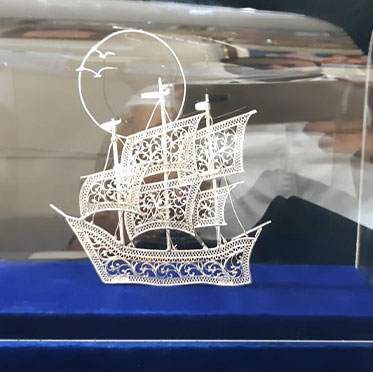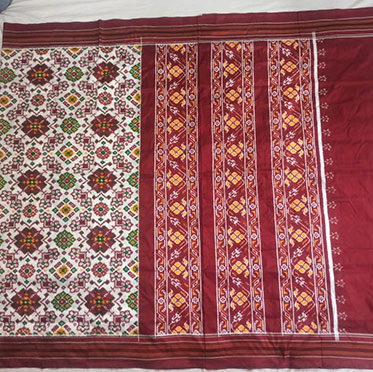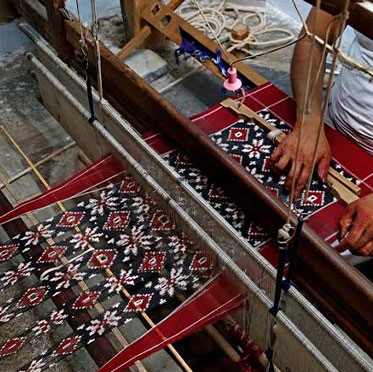






Silver Filigree
Filigree, earlier known as filigrann or filigrene, represents a delicate form of jewellery metalwork, and it is usually made of gold and silver. The pieces of work are accompanied by tiny beads or twisted threads, or both of these in combination. These are soldered together to the surface of a same metal object and arranged in the form of artistic motifs.
The roots of Filigree can also be traced back to the Italian and French metal work from 17th to 19th century. The English word filigree is derived from the Latin word "filum" which means thread and "granum" means grain that signifies a small bead.
Karimnagar region in Telangana is home to many highly skilled artists who practise the delicate craftsmanship called filigree. They are skilled in creating many articles through Silver Filigree such as Spoons, cigarette cases, buttons boxes, ashtrays, jewellery, buttons pill boxes, paandans and also perfume containers. They create special designs involving Peacock, parrots and fish which are clearly depicted in the perfume containers. The artisans of Karimnagar display fine mastery wherein they twist the delicate silver wire into delicate loops. These are knitted in a form of zigzag pattern which results in an intricate lace like appearance.
Filigree work, which is made using the twisted silver wire ushers a rare charm. The silversmiths crimp the thin strips of fine silver and create loops that are filled with designs formed by thicker and attractive silver strips. These strips and fine silver are further deftly soldered. The versatility of the art is not restricted or limited by tradition. View Vendor List...

Pochampally Ikat
Pochampally ikat is a traditional weaving style being pursued by weavers of Bhoodan Pochampally village of Yadadri Bhongir district. The weaving survives in a few more villages like Koyalgudam, Choutuppal, Siripuram, Bhuvanagiri, Puttapaka and Gattuppala and a few villages around them mostly in Pochampally and Chouttupal division. The Pochampally Handloom Weavers Cooperative Society has 915 individuals and around 3,000 weavers in the town today.
Pochampally Ikat is visually identified by the 'chowkra' design which is a diamond within a square, or its derivatives, having diffused edges. It is made of natural materials such as cotton or silk or a combination of both.
In the sequential method of its production, the sequence of tying (or wrapping) and dyeing section of bundled yarn to a predetermined color scheme prior to weaving. Thus the dye penetrates into the exposed section, while the tiled section remains un- dyed. Various design patterns of Pochampally ikat include single Ikat, double Ikat, chowkra design with different patterns like jewel, animals, geometric patterns etc. Telia Rumal is also one such type of double Ikat design.
The fabric so woven has been used as Sarees for centuries, and is now also used for furnishing, textile and textile goods. While the bifurcation of erstwhile Andhra Pradesh state has hurt its market, but new initiatives like face masks for Covid-19, bed sheets, online presence of products are still managing to attract a decent footfall into the town. View Vendor List...



Telia Rumal
Telia rumal is the method of oil treatment on yarn. It is known for two-fold Ikat weaving with twist and weft structure using vegetable dyes. It originated in Chirala district of Andhra Pradesh. Now the skill is being taken forward by the weavers of Puttapaka village of Narayanpur mandal of Yadadri Bhongir district. Pulanpaka has more than 700 looms at the moment. Noted designer Gajam family has been making telia rumal for 75 years now. They have likewise have been granting the information on this unpredictable art to neighborhood weavers as well.
The previous designs of Telia Rumal used to be careful geometric or vegetal examples because of the inclination of the benefactors. However, after 1930s the specialists began fusing non-literal components like lions, elephants, flying creatures, tickers and even planes, which required better weaving aptitudes. It is no longer tissue size pieces that epicureans can purchase. The families associated with weaving presently make saris, dupattas, dress materials and other specially made pieces with similar strategies and intriguing examples. View Vendor List...




